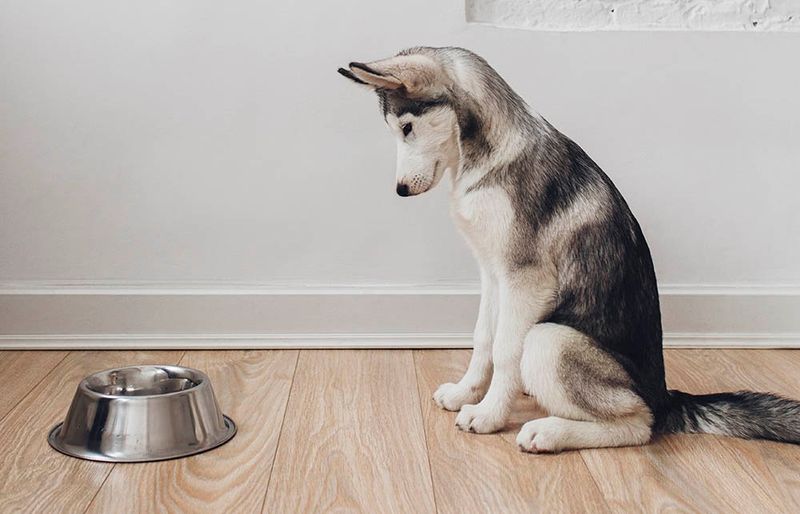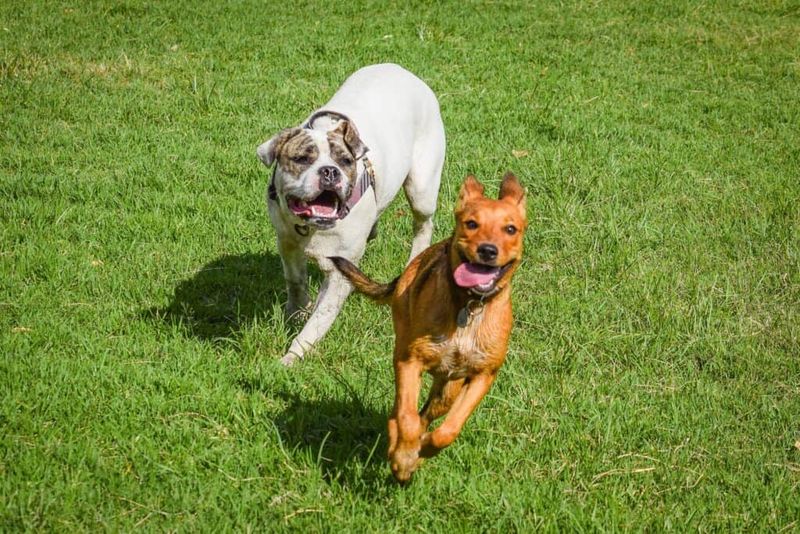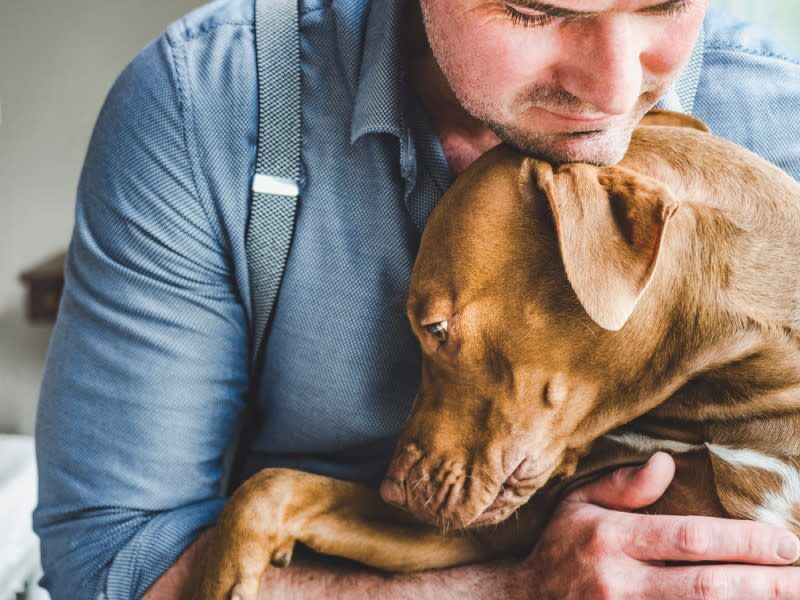When a dog loses a beloved companion, whether it’s another pet or a human family member, they can experience grief. This emotional time requires sensitive handling by pet owners. Veterinarians have identified several common mistakes that pet owners make during these challenging periods. By understanding and avoiding these errors, you can provide the comfort and support your grieving dog needs.
Ignoring Emotional Changes
Noticing subtle changes in your dog’s behavior is crucial when they are grieving. Dogs may become less active, lose interest in play, or appear withdrawn. These changes often signal emotional distress that should not be ignored.
By acknowledging these signs, pet owners can begin to provide the necessary emotional support. Observing your dog’s behavior closely can help identify any shifts in mood or demeanor.
Addressing these changes early can prevent the development of more severe emotional issues, helping your dog navigate through their grief effectively.
Lack of Routine
Maintaining a consistent routine is essential for dogs, especially when they are grieving. Sudden changes in feeding times, walks, or sleeping arrangements can exacerbate feelings of insecurity and confusion.
Routine offers a sense of stability and normalcy, helping dogs feel secure. Pet owners should strive to keep daily activities as predictable as possible during this sensitive time.
By ensuring that mealtimes and walks occur at the same times each day, you can help your grieving dog find comfort and reassurance.
Overlooking Physical Health
Physical health can reflect emotional well-being in dogs. Regular vet checkups become even more important when a dog is grieving. Weight loss, lethargy, or other physical symptoms could indicate unresolved grief or underlying health issues.
Veterinarians play a key role in identifying both physical and emotional problems during these times. Addressing physical health enables the detection of any issues that might be overlooked due to grief.
Maintaining regular health assessments ensures that your dog’s grief doesn’t negatively impact their overall health.
Neglecting Social Interaction
Social interaction is vital for a dog’s emotional well-being. During periods of grief, dogs may isolate themselves, and owners might inadvertently allow this to continue. Encouraging gentle socialization can greatly improve their mood.
Taking your dog to a familiar park or organizing playdates with other friendly dogs can help them reconnect with their playful side. Such activities offer distraction and joy, aiding in emotional recovery.
Gradual reintroduction to social environments ensures that your dog doesn’t feel overwhelmed while benefiting from interaction.
Misreading Signs of Grief
Interpreting a dog’s grief can be challenging. Some pet owners misinterpret behaviors like excessive sleeping or clinginess as signs of mere laziness or neediness. Understanding these as potential grief indicators is crucial.
By recognizing signs of grieving, such as changes in appetite or unusual pacing, owners can better respond to their pet’s needs. Differentiating between typical behavior and grief-related changes is key to proper support.
This awareness enables the development of a supportive environment that fosters healing and adjustment.
Lack of Comfort Items
Comfort items can provide a sense of safety and reassurance for grieving dogs. Items like a favorite toy, blanket, or bed can be particularly soothing. Some pet owners overlook the importance of these familiar objects during grief.
Ensuring that your dog has access to their cherished items can ease their anxiety and provide emotional comfort. These items often carry familiar scents and memories, offering a connection to more secure times.
Integrating comfort items into daily life is a simple yet effective way to support your pet.
Forgetting Exercise
Regular exercise is vital for a dog’s physical and mental health. During periods of grief, some owners reduce exercise, thinking their dog needs rest. However, physical activity can uplift a dog’s mood and alleviate feelings of sadness.
Taking your dog for walks or allowing them to run in open spaces can provide a necessary emotional outlet. Exercise stimulates endorphins, promoting a happier state of mind.
Maintaining an active routine helps in managing grief more effectively, ensuring your dog remains healthy and engaged.
Avoiding Professional Help
Sometimes, a grieving dog may need more than just loving care at home. Professional help from a pet psychologist can be invaluable in addressing complex emotional issues. Some owners hesitate, thinking it’s unnecessary or excessive.
Pet psychologists offer expert insight and strategies tailored to your dog’s specific needs. Seeking professional assistance can provide a structured approach to managing grief.
Engaging with specialists ensures that your dog receives comprehensive care beyond routine measures, facilitating emotional healing.
Ignoring Environmental Changes
Environmental changes can profoundly affect a grieving dog. Moving furniture or introducing new items can increase stress during already emotional times. Pet owners might not realize how these changes impact their pet’s comfort.
Maintaining a familiar environment helps in providing stability. Gradual changes, if necessary, ensure that your dog can adjust without feeling overwhelmed.
Being mindful of environmental factors contributes to a supportive home, aiding in the grieving process.
Inadequate Emotional Support
Providing emotional support is as important as physical care. Some owners may struggle to offer comfort, either due to misunderstanding or personal grief. Being present and attentive helps your dog feel loved and secure.
Spending quiet time together, offering gentle affection, and speaking in soothing tones can provide much-needed reassurance. These actions foster a comforting atmosphere that encourages healing.
Emotional support strengthens the bond between pet and owner, facilitating recovery from grief.
Ignoring Signs of Improvement
As dogs begin to recover from grief, they may show signs of improvement that owners might overlook. Recognizing and encouraging positive changes, like increased enthusiasm or playfulness, reinforces progress.
Celebrating small victories helps in boosting your dog’s confidence and emotional well-being. Being attuned to these changes ensures that you continue to support their journey.
Acknowledging improvement is a key aspect of helping your dog fully recover from grief.
Failure to Recognize Grief Triggers
Identifying triggers that exacerbate a dog’s grief is crucial. Loud noises, certain locations, or specific times can intensify their emotional distress. Owners must be aware of these triggers to provide better support.
Avoiding or mitigating these triggers can create a more comforting environment. Techniques like distraction or comfort items can help during stressful times.
Understanding what affects your dog negatively enables more effective care and emotional support.
Overwhelming with New Experiences
Introducing new experiences during a period of grief can be overwhelming for dogs. Some owners may think new activities will help, but this can add to the stress.
It’s important to balance new experiences with familiar routines and environments. Gradual exposure to new situations allows dogs to adjust without feeling pressured.
Respecting your dog’s pace in exploring new experiences ensures that they remain comfortable and secure.













